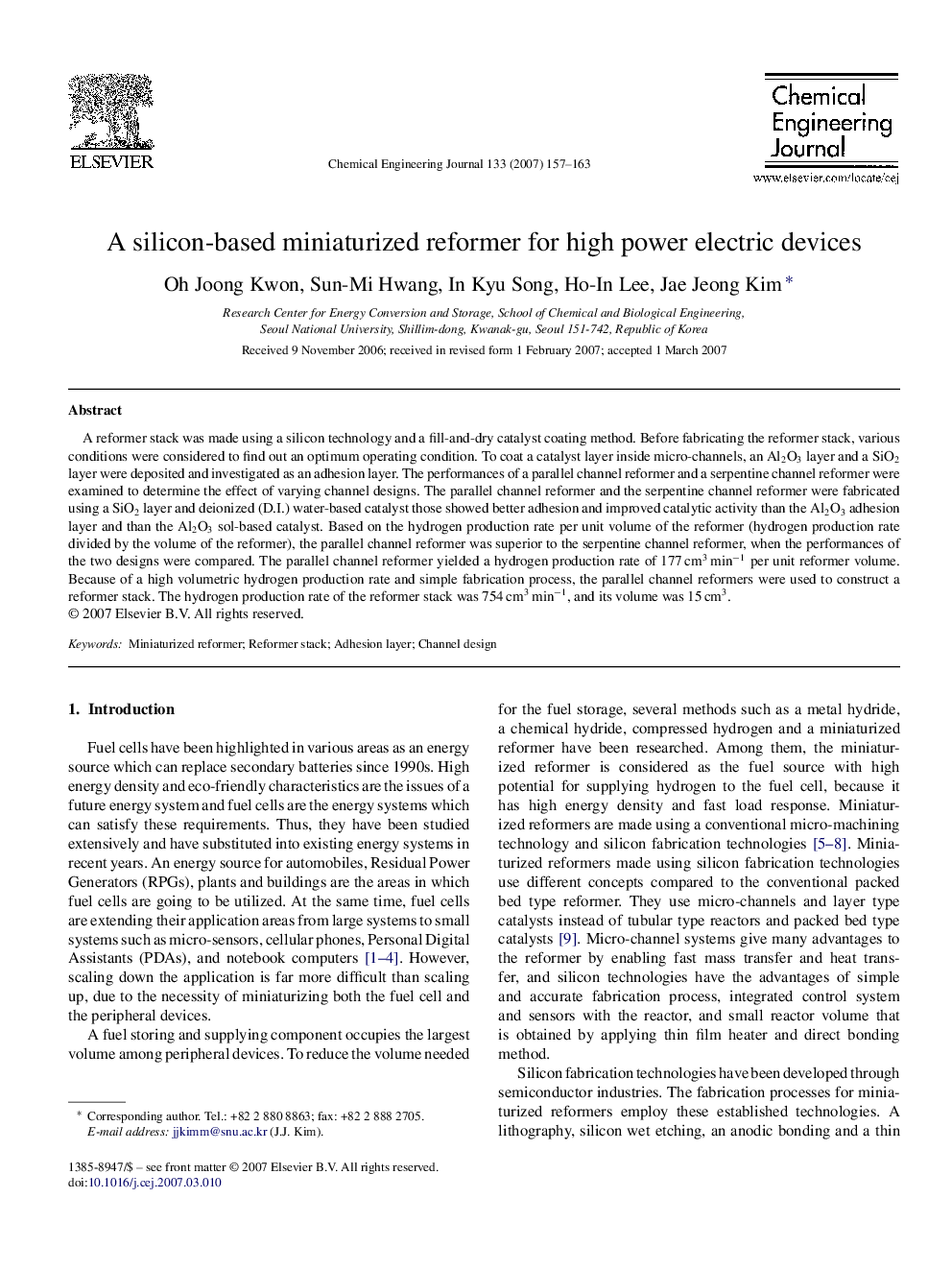| Article ID | Journal | Published Year | Pages | File Type |
|---|---|---|---|---|
| 153678 | Chemical Engineering Journal | 2007 | 7 Pages |
A reformer stack was made using a silicon technology and a fill-and-dry catalyst coating method. Before fabricating the reformer stack, various conditions were considered to find out an optimum operating condition. To coat a catalyst layer inside micro-channels, an Al2O3 layer and a SiO2 layer were deposited and investigated as an adhesion layer. The performances of a parallel channel reformer and a serpentine channel reformer were examined to determine the effect of varying channel designs. The parallel channel reformer and the serpentine channel reformer were fabricated using a SiO2 layer and deionized (D.I.) water-based catalyst those showed better adhesion and improved catalytic activity than the Al2O3 adhesion layer and than the Al2O3 sol-based catalyst. Based on the hydrogen production rate per unit volume of the reformer (hydrogen production rate divided by the volume of the reformer), the parallel channel reformer was superior to the serpentine channel reformer, when the performances of the two designs were compared. The parallel channel reformer yielded a hydrogen production rate of 177 cm3 min−1 per unit reformer volume. Because of a high volumetric hydrogen production rate and simple fabrication process, the parallel channel reformers were used to construct a reformer stack. The hydrogen production rate of the reformer stack was 754 cm3 min−1, and its volume was 15 cm3.
